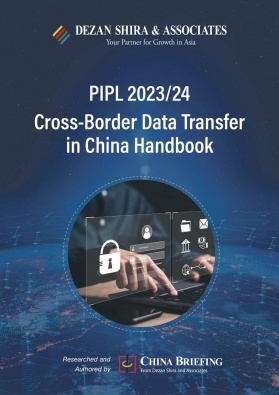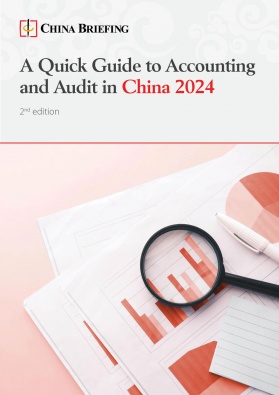Annual CIT Reconciliation in 2024 – A Brief Guide for Companies
The season for China CIT reconciliation in 2024 is underway. Companies are advised to begin tax filing procedures for the 2023 tax year as soon as possible to complete CIT reconciliation before the deadline of May 31, 2024.
China’s annual corporate income tax (CIT) reconciliation season (also referred to as annual CIT settlement or annual CIT filing) for the 2023 tax year is underway, and local tax authorities have begun to issue annual guides to help companies navigate their tax obligations.
All resident CIT taxpayers engaged in production and operation in China are required to complete the final CIT settlement in accordance with China’s tax regulations. In addition, second-level branches of companies that conduct consolidated tax payments across different provinces, autonomous regions, municipalities, and cities must also participate in the final CIT settlement.
Filing CIT reconciliation can be a complicated and cumbersome task that involves filling in forms, compiling annual accounting reports, and gathering tax vouchers for any preferential tax treatment the company may be eligible for. Companies are therefore advised to begin the tax filing procedures as soon as possible so that they can reconcile the final tax payment before the deadline of May 31, 2024.
Below we provide an overview of the requirements for the annual CIT settlement in 2024.
Deadlines for annual CIT reconciliation in 2024
General enterprises must make their final settlement within five months of the end of the tax year. This means companies must settle their 2023 payable and refundable CIT by May 31, 2024.
However, companies that terminate operations during the year and need to liquidate their CIT, whether due to disbanding, bankruptcy, having their business license revoked or other reasons for terminating production and operations, must complete final settlement within 60 days from the date of actual termination of operations.
Completing the final CIT settlement means that a company has determined the amount of tax payable or refundable for the previous tax year, and filled in the annual CIT return based on the monthly or quarterly prepayment of CIT.
Companies don’t have to file the CIT declaration and pay any due taxes at the same time. The declaration can be made first and the payment later, provided both are completed before May 31.
China’s tax authorities recommend that small and medium-sized enterprises (SMEs) complete the declaration in March and April, while companies claiming certain tax incentives should try to complete declarations before April 20 and listed companies before May 10 in order to ensure enough time for payment.
Methods for annual CIT reconciliation in 2024
In most places in China, CIT reconciliation can now be handled either online or in person.
To complete the declaration online, the company must use the electronic tax bureau or electronic declaration enterprise software set up by the jurisdiction in which the country is located, for instance, the tax service websites for Shanghai or Guangdong, or the eTax@SH3 computer application for Shanghai.
To complete the declaration in person, an employee must bring the required materials to the tax office in the jurisdiction in which the company is registered to complete the procedures.
Materials required for annual CIT reconciliation in 2024
Resident enterprises are required to provide a range of documents to complete the CIT declaration, including:
- The Annual Tax Return for Enterprise Income Tax of the People’s Republic of China (Type A, 2017 Edition); and
- The annual financial accounting report.
In addition, relevant information and materials must also be submitted in the following scenarios:
- The taxpayer undergoes special reorganization, asset (equity) transfer, deferred tax on non-monetary asset investment, determination or adjustment of tax cost objects for real estate development products, overseas tax credits, related business transactions; or
- When overseas investment reaches a certain proportion of total investment.
Companies must also provide certain materials if they are a head office with branches operating across districts, or a branch of a larger company. These materials are summarized in the table below.
| Materials Required by Taxpayer Companies with Cross-Province Operations | ||
| Head office | Branch | |
| 1 | Annual Tax Return for Enterprise Income Tax of the People’s Republic of China (Type A, 2017 Edition) (including distribution table) | The People’s Republic of China Enterprise Income Tax Monthly (Quarterly) Prepayment Tax Return (Type A, 2018 Edition) |
| 2 | Annual financial statements of the head office | Consolidated taxable enterprise branch income tax distribution form accepted by the competent tax authority where the head office is located |
| 3 | Annual financial statements of each branch | Annual financial statement of the branch (or annual financial status and operating income and expenditure statement) |
| 4 | Explanation of the annual tax adjustments of each branch participating in the enterprise | Explanation of annual tax adjustments for branches participating in enterprises |
| Source: Foshan Municipal Tax Bureau, State Tax Administration | ||
CIT deductions for the 2023 tax year
There are many different CIT incentives available for companies in China that can help reduce tax burdens. These include additional pre-tax deduction of certain expenses, such as research and development (R&D) expenses, tax credits for certain costs, such as the investment in seed-stage or start-up technology enterprises, and accelerated depreciation or one-time deduction of the value of fixed assets.
Enterprises shall determine whether they meet the conditions for preferential policies according to their business conditions and relevant tax regulations. Those who meet the conditions can calculate the amount of tax relief by themselves and enjoy tax incentives by filling in the CIT return.
For the 2023 tax year, the following policies are worth taxpayers’ particular attention, although there are many others.
Reduced 15 percent CIT rate
To encourage business development and investment in key industries in China, several areas have implemented a reduced 15 percent CIT rate for eligible companies. The standard CIT rate in China is 25 percent. This CIT rate is available to companies operating in certain sectors in various development zones in China, including the Lingang New Area of the Shanghai Free Trade Zone in Shanghai (Lingang New Area), the Fujian Pingtan Comprehensive Pilot Zone in Fuzhou, Fujian (Fujian Pingtan), and the Hengqin-Guangdong-Macao In-Depth Cooperation Zone in Zhuhai, Guangdong (Hengqin Cooperation Zone), among many others.
The reduced CIT rate is only applicable to companies that operate within certain encouraged industries, which are specified by each local authority. In addition, the local governments also require companies to have made a certain level of commitment to the area in order to be able to enjoy the policy, which in many means proving that they have “substantial operations” within the respective areas.
For more about the reduced 15 percent CIT rate, see our China Briefing article: Does Your Business Qualify for China’s Reduced 15% CIT Rate?
Deduction of R&D expenses
In March 2023, China’s tax authorities extended the policy of pre-tax super deduction of R&D expenses (“super deduction”) indefinitely, making it a permanent preferential policy for all types of companies in China.
The super deduction policy allows companies a 200 percent pre-tax deduction of the expenses incurred in conducting R&D activities that do not form intangible assets. The policy means that a company that incurs RMB 10 million in R&D expenses in a given year can deduct 100 percent of the expenses incurred in addition to the pre-tax deduction of RMB 10 million that it would already be granted by law, amounting to a total deduction before tax of RMB 20 million. This will result in considerably lower corporate income tax (CIT) payable for the given tax year.
Starting from 2023, companies can enjoy the pre-tax super deduction preferential treatment for R&D expenses when making prepayment declarations for the second quarter.
Note that those who have already received part of the prepayment can receive the remaining R&D expenses during the final settlement. Those who have not yet received the prepayment can receive the R&D expenses collected during the final settlement.
For more about the R&D expense deduction policy, see our China Briefing article: Pre-Tax Super Deduction of R&D Expenses in 2023 – An Explainer.
CIT incentives for small and low-profit enterprises
China has enhanced its inclusive tax cut policy for small and low-profit enterprises (SLPEs). SLPEs refer to enterprises engaged in non-restrictive and non-prohibited businesses that have up to RMB 3 million (approx. US$458,500) in annual taxable income, up to 300 employees, and up to RMB 50 million (approx. US$7.7 million) in total asset value.
For eligible SLPEs, the portion of annual taxable income up to RMB 1 million will be reduced by 25 percent and included in the taxable income, while the CIT rate will be reduced to 20 percent. China’s standard CIT rate is 25 percent.
This policy will be in place until the end of 2027.
For more about tax incentives, see our China Briefing article: Preparing for China’s Annual CIT Filing: Have You Exhausted All CIT Incentives?
Other considerations for CIT reconciliation
Pre-tax deduction vouchers
Pre-tax deduction vouchers are a critical part of the annual CIT reconciliation procedure.
Pre-tax deduction vouchers are any documents that demonstrate valid expenses incurred in the process of generating income and are used to make pre-tax deductions when calculating the taxable income for CIT purposes.
Companies should obtain pre-tax deduction vouchers that meet the regulations when expenditures are incurred. However, considering that in some cases, the enterprise may need to issue or replace pre-tax deduction vouchers that meet the regulations.
The Administrative Measures on Pre-tax Deduction Vouchers for Corporate Income Tax stipulate that enterprises should obtain pre-tax deduction vouchers that meet the regulations before the end of the final settlement period stipulated in the CIT Law of the current year.
Note that if a company fails to obtain invoices or other external vouchers that comply with the regulations within the specified period, or obtains non-compliant invoices or other external vouchers, then the company can retroactively deduct the corresponding expenditures after obtaining invoices and other external vouchers that meet the requirements in subsequent years. However, retroactive deductions cannot be made after five years from the year when the expenses were incurred.
For more about pre-tax deduction vouchers, see our China Briefing article: Preparing for China’s Annual CIT Filing: FAQs on Pre-Tax Deduction Vouchers.
Book-tax differences
Book-tax difference management is one of the major tasks that financial managers and auditors need to deal with during the annual CIT reconciliation season.
Book-tax difference refers to the discrepancies between China’s accounting standards (CAS) and tax laws. To put it simply, book-tax difference means that for the same transaction, the tax treatment and timing of recognition as stipulated by the tax laws are different from the accounting treatment as stipulated by the accounting standards.
For better tax compliance, enterprises should understand and identify book-tax differences in assets, liabilities, income, and costs and expenses, and accurately adjust the “accounting profits” in the financial statements to the “taxable income” in the tax return.
For more about book-tax differences, see our China Briefing article: Preparing for China’s Annual CIT Filing: How to Deal with Book-Tax Differences
Properly retain relevant documents
Following the deadline for annual CIT filing, there are certain compliance points that businesses should still pay attention to. Among others, businesses should at least retain the supporting documents for tax incentives as required and properly collect and preserve documentation related to asset loss deductions.
For more about documentation retention, see our China Briefing article: Additional Compliance After Completing China’s Annual CIT Filing.
Disclaimer
The information provided is for general purposes only and may not account for local variations. No liability is assumed for the completeness or accuracy of the information.
About Us
China Briefing is one of five regional Asia Briefing publications, supported by Dezan Shira & Associates. For a complimentary subscription to China Briefing’s content products, please click here.
Dezan Shira & Associates assists foreign investors into China and has done so since 1992 through offices in Beijing, Tianjin, Dalian, Qingdao, Shanghai, Hangzhou, Ningbo, Suzhou, Guangzhou, Dongguan, Haikou, Zhongshan, Shenzhen, and Hong Kong. We also have offices in Vietnam, Indonesia, Singapore, United States, Germany, Italy, India, and Dubai (UAE) and partner firms assisting foreign investors in The Philippines, Malaysia, Thailand, Bangladesh, and Australia. For assistance in China, please contact the firm at china@dezshira.com or visit our website at www.dezshira.com.
- Previous Article Verification Letter of Invitation Requirement in the China Visa Process: A Brief Guide
- Next Article Shanghai’s Lingang New Area Launches First Cross-Border Data Service Center to Facilitate Data Export








